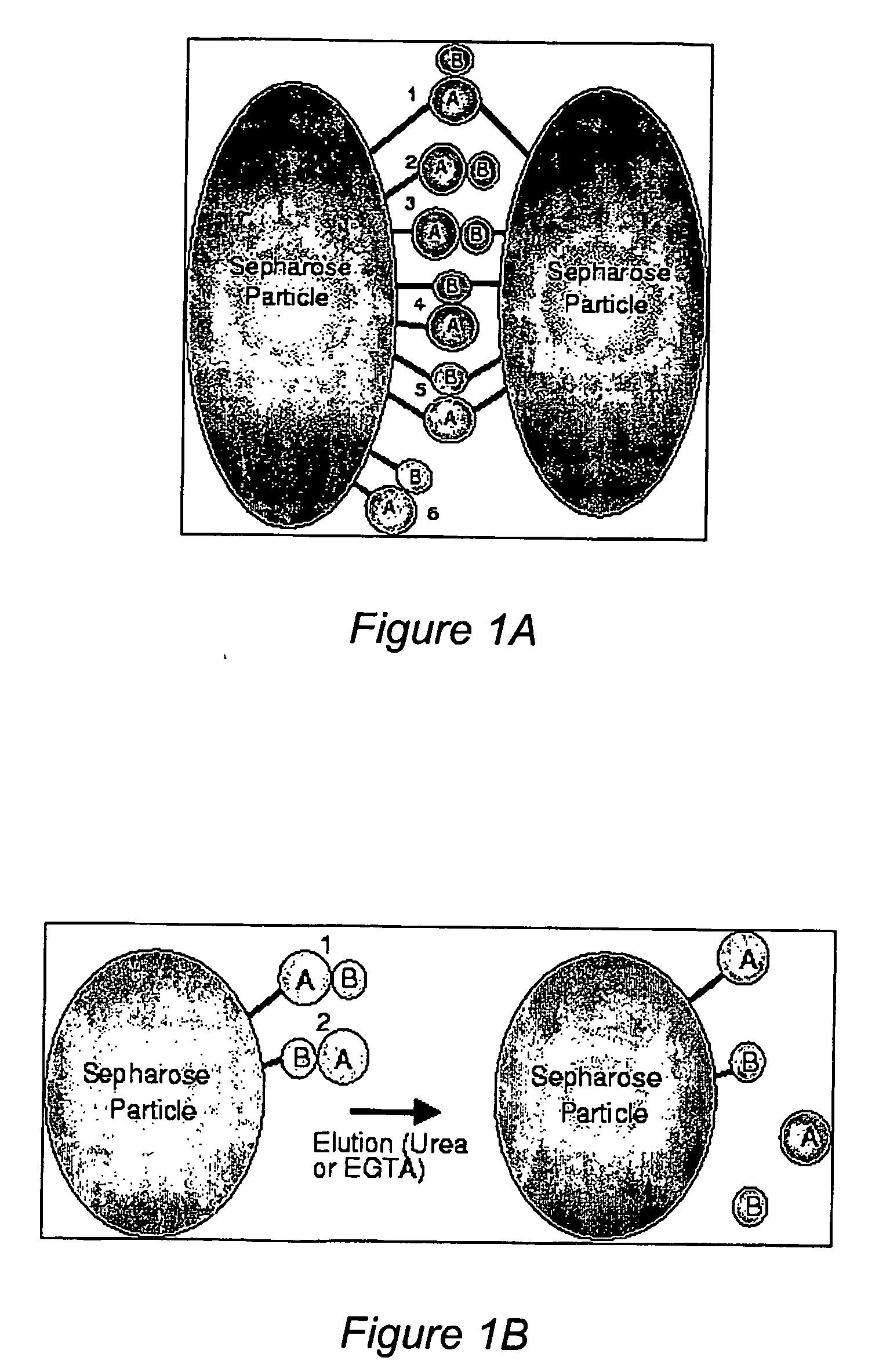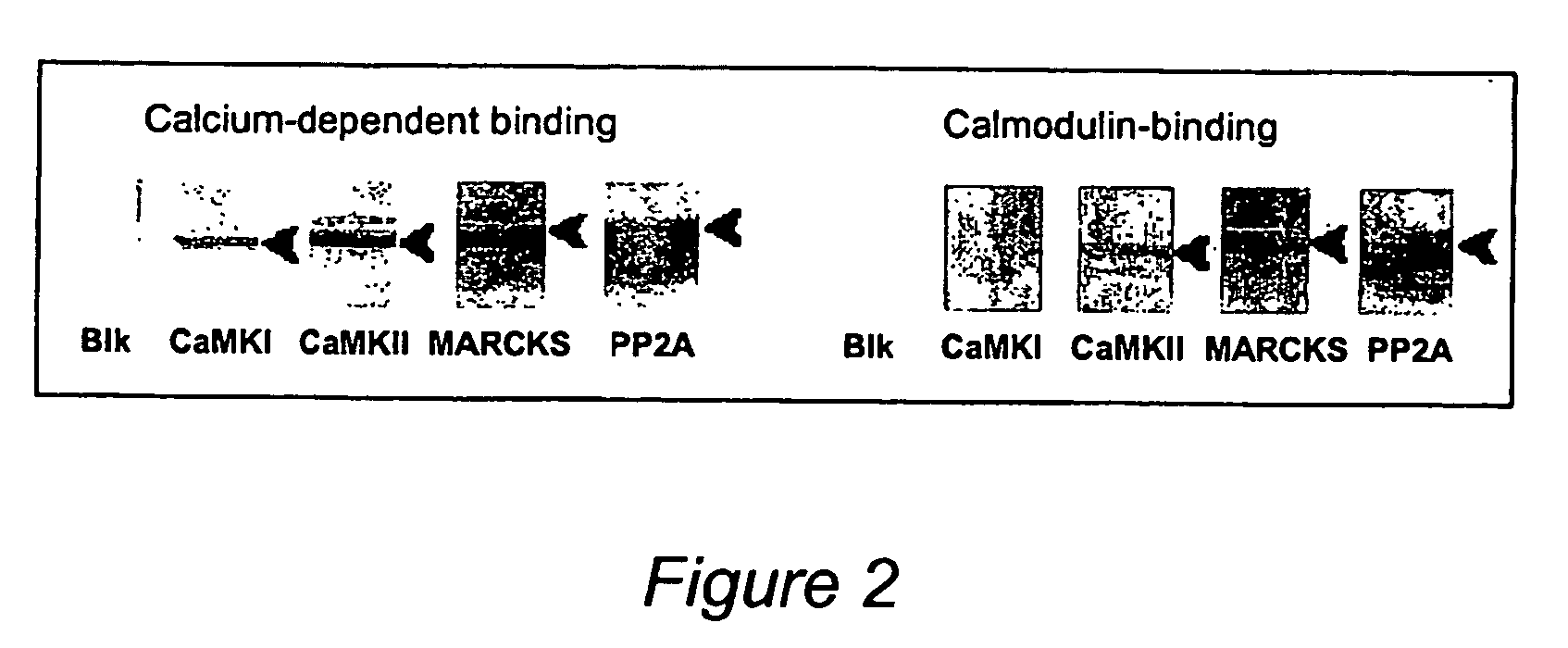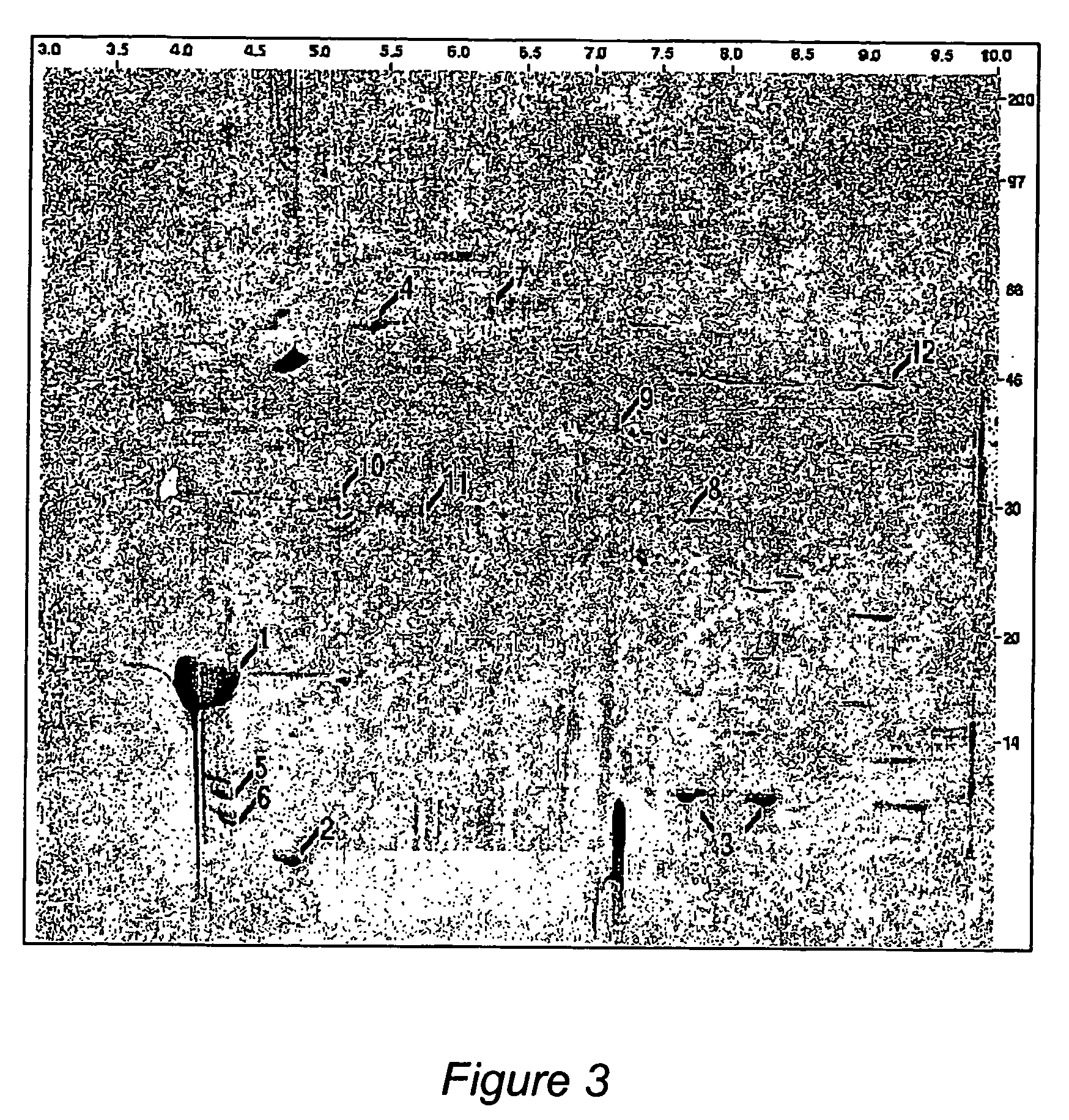Method for isolating subpopulations of proteins that engage in protein-protein interactions
a protein and sub-population technology, applied in the field of proteinprotein interaction research, can solve the problems of insufficient method for systematic study of protein interaction in mammalian cells or other complex mixtures of proteins, limited use of conventional biochemical methods, and complex task of investigating interactions, etc., to reduce the total number of distinct proteins, reduce the signal-to-noise ratio, and increase the concentration
- Summary
- Abstract
- Description
- Claims
- Application Information
AI Technical Summary
Benefits of technology
Problems solved by technology
Method used
Image
Examples
Embodiment Construction
[0031] Abbreviations:
[0032] CHAPS: 3-[(3-cholamidopropyl)dimethylammonio]-1-propane sulfonate
[0033] EGTA: Ethylene glycol bis-(2-aminoethyl ether)-N,N,N′,N′-tetraacetic acid
[0034] MARCKS: Myristoylated Alanine-Rich C Kinase Substrate
[0035] Non-physiologically relevant interactions are a significant potential problem in many studies of protein-protein interactions, including the two-hybrid system. In the present method, when a tissue sample is homogenized, in addition to protein interactions caused by the treatment, nonspecific protein interactions will also occur between proteins that normally are not in contact with each other. For example, interactions between membrane and nuclear proteins, or between astrocyte and neuronal proteins could occur. To prevent this from producing false interactions, it is necessary to use both a treatment and control sample and consider only differences between the two samples as representing potentially significant interactions. Since any nonspec...
PUM
 Login to View More
Login to View More Abstract
Description
Claims
Application Information
 Login to View More
Login to View More - R&D
- Intellectual Property
- Life Sciences
- Materials
- Tech Scout
- Unparalleled Data Quality
- Higher Quality Content
- 60% Fewer Hallucinations
Browse by: Latest US Patents, China's latest patents, Technical Efficacy Thesaurus, Application Domain, Technology Topic, Popular Technical Reports.
© 2025 PatSnap. All rights reserved.Legal|Privacy policy|Modern Slavery Act Transparency Statement|Sitemap|About US| Contact US: help@patsnap.com



